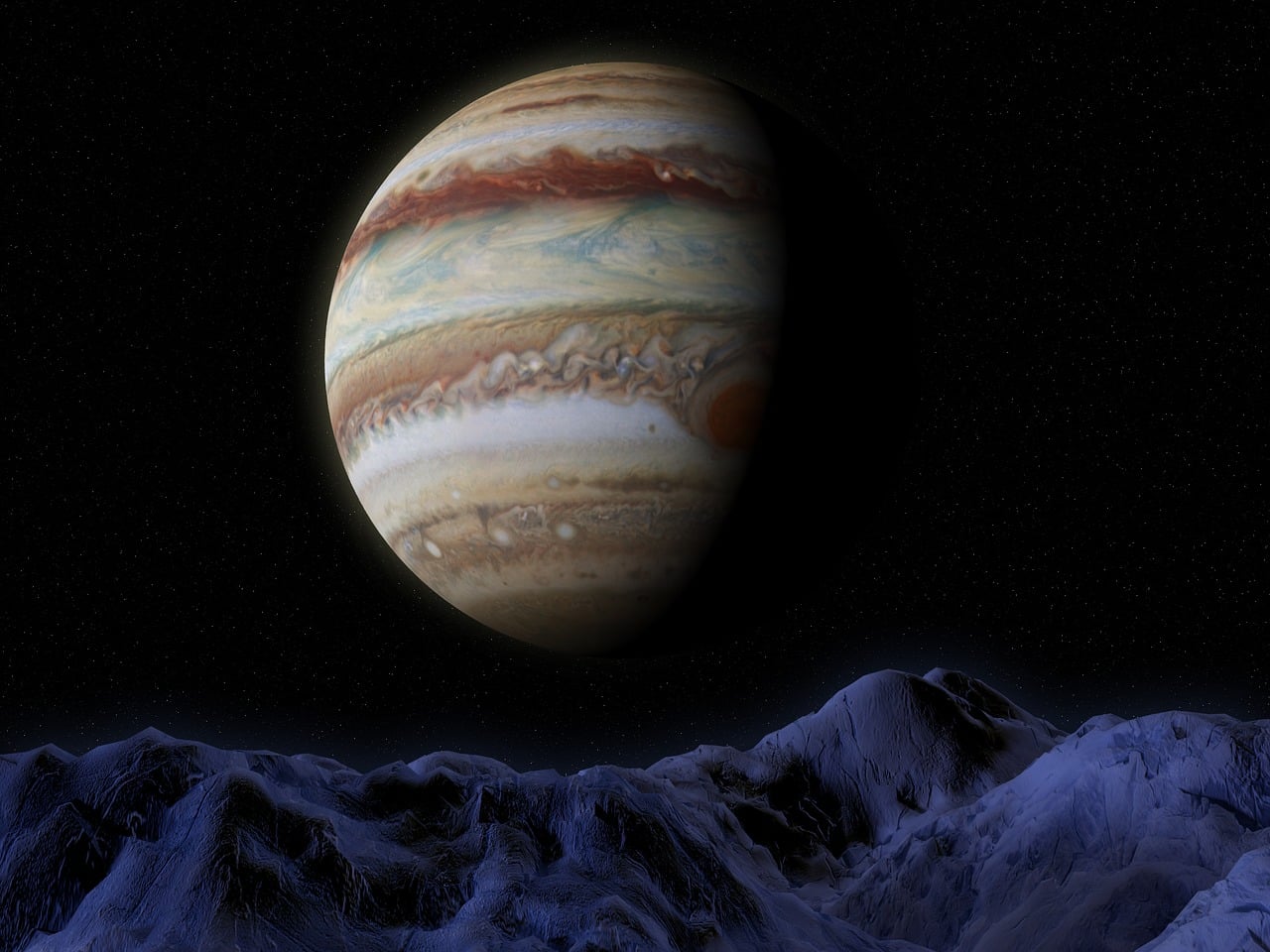As the largest planet in the solar system, Jupiter is surrounded by many natural satellites, one of which is Io. Io is considered the most volcanically active body in the solar system, even when compared to Earth. Now Jupiter’s moon’s active volcanoes were captured by new Juno images, during its 17th flyby of the gas giant it has studied for years.
NASA’s Voyager spacecraft was the first to capture Jupiter’s moon’s active volcanoes in the late 1970s, while the Galileo mission provided more detailed images in the late 1990’s and early 2000’s. Juno is currently on the active mission of orbiting Jupiter and it sent back some stunning images of a volcanic plume of Io.
The images and news of the findings were announced by the Southwest Research Institute on Dec. 31, 2018, among other interesting astronomical news on New Year’s Eve; the others being the New Horizons flight by Ultima Thule and OSIRIS-REx’s approach to the Big Asteroid Bennu, which has also set a new record for NASA scientists.
Juno images of Jupiter’s moon’s active volcanoes were taken by the JunoCam camera, the Stellar Reference Unit (SRU), the Jovian Infrared Auroral Mapper (JIRAM) and the Ultraviolet Imaging Spectrograph (UVS) which observed Io for over an hour. The instrument was used to learn more about the polar regions of Io, and to see the evidence of the active eruptions.
While the Voyager and Galileo spacecrafts could successfully study Jupiter’s moon’s active volcanoes, the Juno spacecraft is not designed to do so, but focuses on the gas giant instead. Nevertheless, the spacecraft successfully made observations from a distance.
“We knew we were breaking new ground with a multi-spectral campaign to view Io’s polar region, but no one expected we would get so lucky as to see an active volcanic plume shooting material off the moon‘s surface,” Scott Bolton, principal investigator of the Juno mission and an associate vice president of Southwest Research Institute’s Space Science and Engineering Division, said in a press release. “This is quite a New Year’s present showing us that Juno has the ability to clearly see plumes.
“The ground is already in shadow, but the height of the plume allows it to reflect sunlight, much like the way mountaintops or clouds on the Earth continue to be lit after the sun has set.” Candice Hansen-Koharcheck, the JunoCam lead from the Planetary Science Institute, said in a statement.
Even though the new Juno images were taken from a good distance, they provided a lot of information that scientists can use to learn more about Jupiter and its moons. The images show how Jupiter interacts with its five moons, as well as the causes of the phenomena with Io’s volcanic activity. The moon is not very large, yet it interacts with Jupiter so greatly that the volcanic activity is the result of its gravitational interaction with its planet. The volcanoes produce large plumes of sulfur dioxide gas which resemble an umbrella, as well as produce large lava fields.





